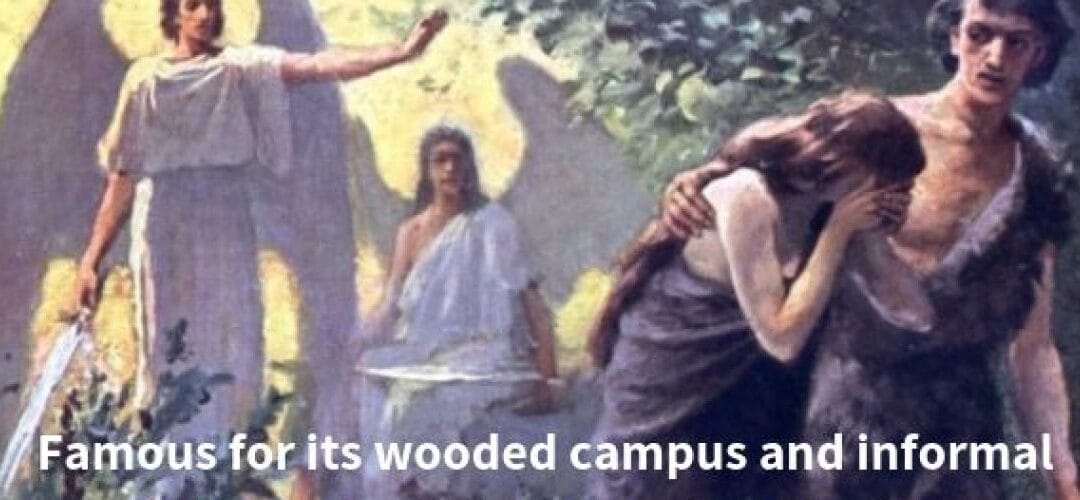By Paul Culp, MA (Oxon.), CFT, GCDF, CCSP
Amid unprecedented challenges, the cry “TIM-BERRRRRR!” rings out in the groves of academe.
A few weeks ago we reported on the trend toward diminishing college enrollment nationwide (Decline in College Enrollment Continues), explaining that a small number of colleges are prospering amid the deterioration but that most are experiencing discomfort, with for-profit colleges being especially hard-hit. Inevitably some colleges are no longer able to continue, and the outright demise of institutions of higher education is obviously accelerating. You might be surprised by how many colleges are closing. Though The Coaching Educator tries to stay on top of all significant developments in higher education, we confess to being surprised by the extent of the carnage.
Education Dive (an apt name, in the circumstances) reports that about 200 colleges, professional schools, and vocational schools have closed or undergone mergers and consolidations just since 2016, with two-thirds of those being shuttered outright. More than 50 for-profit colleges closed or were consolidated or bought out as federal disapproval of certain accrediting agencies brought down some of the larger players in the for-profit field, which undermined confidence in the entire sector.
According to The Chronicle of Higher Education, for-profit colleges represent only about 10 percent of total enrollment, but they account for 85 percent of students displaced by closures.
Small liberal arts colleges, many of them with religious affiliations, have also suffered notably. Though we reported previously that larger institutions were experiencing more consistent enrollment declines than smaller ones, the bigger ones have been more resilient. The list of small colleges biting the dust includes Green Mountain, Burlington, Mt. Ida, Shimer (merger), Newbury, and Hiwassee. Our readers might remember that Sweet Briar announced its impending closure in 2015, only to be saved by an alumni-driven fundraising campaign. Similar measures kept Iowa Wesleyan open during the semester just past. New England, whose small colleges have historically contributed so much to the life and leadership of the nation, has been the scene of much devastation and is likely to experience considerably more.
Meanwhile military schools continue to be an endangered species; Wentworth went the way of all flesh in 2017, joining a host of others in the long, sickening slide that has afflicted such institutions for half a century.
In the public sector, mergers and consolidations are the order of the day. The gigantic University of Wisconsin system is consolidating 13 two-year schools into seven four-year ones, for instance, and the University of Georgia has been consolidating campuses for several years. Alabama’s extensive community college system, historically a model for numerous other states (Alabama’s reputation for a weak secondary school system notwithstanding), is headed in the same direction.
Why is all this happening? After all, as we have explained elsewhere, the college-age population has actually increased—contrary to popular belief—though the rate of growth is slowing down. Yet enrollment overall continues to erode, taking colleges with it. As we explained in An Arm and a Leg and Your First-born Child: Why College Costs So Much, the price of higher education has been driven up by the exponential growth of administrative positions, a sizable increase in the quality and quantity of student services, and widespread efforts to improve amenities. While very few students would prefer to return to an era of bureaucratic inefficiency, scanty personal and academic counseling, Soviet-style dorms, and institutional food that would make any self-respecting pig back away from the chow line in mute horror, the alternatives cost money. A lot of money. Running a college is expensive, and more and more people can’t pay when that cost gets passed on to the customer, and/or they don’t want to assume a crippling student debt. This leads to tuition discounts as colleges try to maintain enrollment, but only a large endowment fund can support much of that for very long. Sic transit the small private college where people learn erudite expressions like “sic transit.”
Not that all of the exorbitant expenses of operating a college are newfangled and native to the current era of runaway price escalation. The time-honored trees and lakes and ivy-covered walls and hard-to-heat stone structures are financially burdensome and can seem irrelevant in an era that demonstrates a preference for screenery over scenery. Maybe those Soviet architects were onto something after all. Add the lure of online-at-home options commonly offered by larger schools that can afford to design and implement such programs, and the small schools fall even farther behind.
Another source of pressure lies in the shift of the population south and west, away from the old cultural centers of the country and into regions in which higher education is not so deeply embedded in history. In a related phenomenon, small liberal arts schools and their hoary traditions are often dismissed as irrelevant in the Age of STEM, a viewpoint we argued against in The Rise of Artificial Intelligence and the Need for Liberal Arts Education.
Unquestionably a long, painful restructuring is underway, a process likely to result in serious reconsideration of what an education is and how to deliver it. Some of the colleges that inflated tuition and touted their expenditure per student as a measure of prestige may now wish they hadn’t, and some of the social science professors who admire the Soviet Bloc might now get a chance to live accordingly. At the moment it appears that larger, more impersonal organizations have the edge because they can absorb shocks more readily and can practice economies of scale. We at The Coaching Educator, with a decade of experience helping students get into and succeed at the right college, expect to be helping our clients navigate a very different landscape a decade from now.
One thing we’ve always been able to do, in addition to getting students ready for college, is determine whether a particular college is ready for them. We’ll be keeping an eye peeled for trouble and helping families who trust us determine which colleges they can trust.
To learn more about our philosophy and capabilities, be sure to watch our free webinars, listen to our podcasts, sign up for our four-week College App Boot Camp, consider our Ultimate Programs and our special services for athletes and performing-arts students, and book a consultation to hear what we can do for you and how we do it. Keep reading this blog, and look for us on social media (see links below) as we keep our clients and admirers advised of new developments in our effort to help students get into and succeed at the right school.
Paul Culp is certified as a global career development facilitator and writes about college admissions, college costs, financial aid, and college life in general for The Coaching Educator team. A former journalist and corporate ghostwriter who now operates Shenandoah Proofreading, Editing & Composition Services (SPECS), he has also been a humanities teacher at all levels from university down to sixth grade. Paul has degrees from Oxford University, Jacksonville State University, and Samford University, and also is certified as a fitness trainer.
Image: http://childrenschapel.org/biblestories/firstman.html
We hope you enjoyed “Colleges Are Closing. Lots of Colleges.” For more about college admissions and college life, we also recommend:
Culp, Paul. “An Arm and a Leg and Your First-born Child: Why College Costs So Much,” The Coaching Educator, 6 September 2018, http://tce.local/2018/09/06/an-arm-and-a-leg-and-your-first-born-child-why-college-costs-so-much/
Culp, Paul. “Decline in College Enrollment Continues,” The Coaching Educator, 3 June 2019, http://tce.local/2019/06/03/decline-in-college-enrollment-continues/
Culp, Paul. “The Rise of Artificial Intelligence and the Need for Liberal Arts Education,” The Coaching Educator, 7 June 2018, http://tce.local/2018/06/07/the-rise-of-artificial-intelligence-and-the-need-for-liberal-arts-education/

